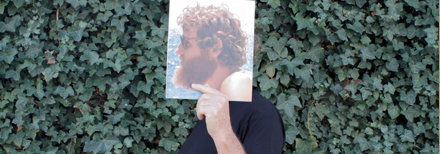
Indesign magazine has named David Trubridge its 50th Luminary, as part of the architecture and design magazine’s Luminaries series that honours “outstanding contributors to Australian design culture.” The design extraordinaire and New Zealand icon (we don’t use that word lightly) is the first New Zealander to be named, and was celebrated this week in an exclusive cocktail function, ahead of Melbourne Indesign this weekend.
We speak to David about his childhood, design process and why there’s no such thing as sustainable design.

My childhood was spent… making things, model aeroplanes, railways, boats (one out of used matchsticks which I collected off the beach promenade), and all the games like Monopoly and Risk which I found much more fun to make than to play!
My first job was… making a model of the Golden Hind for a restaurant in Malta – it is the galleon in which Sir Francis Drake made one of the first circumnavigations.
My design process starts with… what I call the art process, free-floating visualisation using the right brain hemisphere. This is something that can’t be willed, just subtly encouraged out like Robert Burns’ timorous beastie. You get clever at getting to know how to create the right conditions to help the coaxing process.
I have to confess that I don’t get inspiration from other design… a work of design has already been done. I can admire fine design, even the simple bamboo tongs we use to extract toast from the toaster, but these are not starting points for me.
I draw my energy and inspiration mostly from… nature, but also from the work of artists who are pioneers, such as Richard Long, Anselm Kiefer, Richard Serra, Dorothy Napangardi (and many other women aboriginal artists), and Olafur Eliasson. In effect they open up new territory which applied artists to develop.
Being environmentally-aware as a designer is important because… we are ultimately responsible for the things we create and for their effect on the environment. We can no longer hide and pretend that it is nothing to do with us. There is no such thing as sustainable design, only good design and bad design.
My next big design project… is to do with boats, traditional outrigger canoe designs, and the effects of rising sea level on tiny Pacific Island communities.
The New Zealand design industry… is small but, against the odds, vibrant. We have so little investment from manufacturing, unlike Europe, but that is inevitable given our tiny market and the overpowering cost of exporting large items like furniture. It forces us to be creative and to work within these limits and if we can do that it gives us strength.




